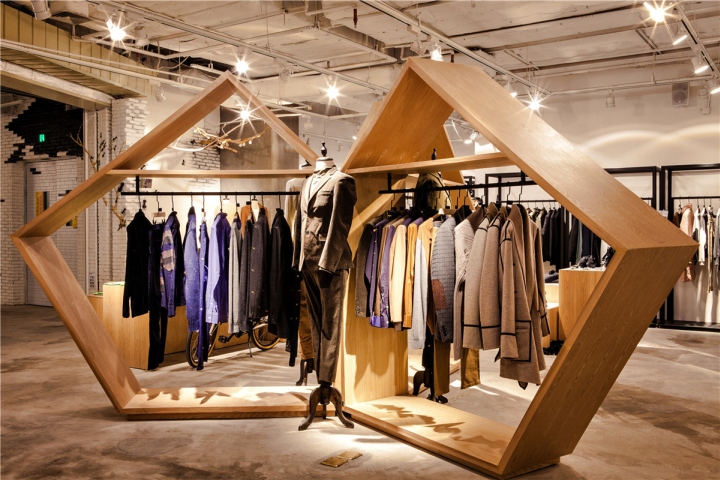Checking Out the Development and Influence of Clothing on Modern Fashion Trends
The evolution of apparel has actually dramatically affected modern style patterns, merging historic precedents with advanced innovations. Renowned figures like Coco Chanel and Yves Saint Laurent changed the style sector by presenting principles that prioritize convenience and ease of access, which continue to reverberate today.
Historic Fashion Influencers
In the tapestry of style history, particular figures have actually left an indelible mark, forming the patterns and designs that define whole eras. Coco Chanel, an innovative developer, redefined ladies's style by introducing comfy, stylish clothing that departed from limiting corsets. Her iconic Chanel fit and little black dress have come to be timeless staples in closets worldwide. Christian Dior's post-war "New Look" in 1947, with its event of feminineness through complete skirts and cinched waistlines, marked a return to opulence and has actually continued to influence developers.
Elsa Schiaparelli is one more essential figure, renowned for her progressive layouts that integrated surrealist art, collaborating with Salvador Dalí to produce wayward items that tested standard appearances. Her ingenious usage of shade and vibrant patterns resounds in modern fashion. Yves Saint Laurent, on the other hand, democratized haute couture with prêt-à-porter collections, bringing runway styles to the masses and setting a criterion for modern-day ready-to-wear lines.
These dreamers, to name a few, not only reinvented fashion in their times however also set enduring fads that reverberate in today's fashion market, offering a foundation upon which contemporary developers remain to innovate and build. Their heritages highlight the significance of imagination and bold in vogue's ever-evolving story.
Technological Developments in vogue
Among the dynamic landscape of the fashion business, technological developments stand at the forefront of innovation, improving exactly how designers develop and consumers involve with fashion. The integration of 3D printing has reinvented style procedures, allowing designers to trying out intricate frameworks and sustainable products that were previously impossible. This innovation assists in fast prototyping, lowering waste and quickening production times.

Smart fabrics, embedding technology right into textiles, are additionally changing the industry. Innovations like self-cleaning and temperature-regulating textiles provide improved capability and comfort. Wearable technology, including features like physical fitness tracking and interaction, adds a brand-new dimension to style, combining aesthetic appeals with practicality.
Social Shifts and Style
As technical advancements continue to reshape the apparel industry, cultural changes are just as influential, redefining style and consumer preferences. In recent years, the surge of social media sites systems has actually sped up the circulation of international fashion trends, enabling diverse cultural impacts to exist together and assemble. This digital interconnectivity has facilitated the rapid exchange of ideas, leading to an extra inclusive and eclectic analysis of design that shows the diverse nature of modern culture.
Cultural understanding and recognition have prompted developers to draw ideas from a broader range of ethnic and historic contexts, incorporating typical themes with contemporary looks. This combination has caused fashion that resonates with a bigger audience, advertising a feeling of identity and belonging throughout different demographics. Additionally, the page raising demand for customization has driven brands to supply adjustable options, making it possible for you could try here consumers to share individuality while reflecting their social heritage.
Furthermore, shifting social worths have affected fashion, with inclusivity and diversity coming to be central motifs. The industry has actually begun to accept designs and influencers of different type of body, ethnic cultures, and gender identifications, challenging traditional appeal standards. This makeover underscores the power of social changes fit the future of fashion, as design becomes a much more genuine expression of collective and individual identity.
Sustainability and Modern Style
While the apparel industry remains to advance, the crucial for sustainability has come to be progressively immediate, affecting modern design methods. This shift aims to resolve honest factors to consider and ecological concerns, resulting in a reevaluation of standard manufacturing approaches. Developers are now integrating sustainable materials, such as natural cotton, recycled polyester, and biodegradable fabrics, into their collections, decreasing the ecological impact of fashion. The increase of slow-moving fashion, which emphasizes top quality over amount, motivates customers to buy timeless pieces instead of short-term fads.
In addition, modern layout is characterized by its innovation in reducing waste and advertising circularity. This approach not just mitigates environmental influence yet additionally improves the social duty of fashion homes.

Future Trends in vogue

Sustainability will proceed to be a driving force in shaping future fashion patterns. The market is progressively adopting green products and moral manufacturing methods, replying to an expanding customer demand for liable methods. Innovations such as bio-fabricated materials and closed-loop recycling systems are readied to redefine how apparel is produced and consumed, lowering ecological impact while preserving style and quality.
Cultural changes, consisting of the rise of inclusivity and variety, will certainly likewise play a critical duty. As society becomes extra aware of social problems, fashion is anticipated to become a system for expression and adjustment. Developers will likely concentrate on developing collections that mirror a more comprehensive variety of identities and experiences, championing depiction and ease of access.
Final Thought
The advancement of clothing substantially impacts modern fashion trends, where historical influences combine with contemporary layouts. This continuous evolution emphasizes fashion's function as a mirror to societal values and technological development, recommending a future rich with technology and inclusivity.
The development of apparel has dramatically influenced modern-day fashion trends, merging historical criteria with advanced advancements.Among the dynamic landscape of the style sector, technological innovations stand at the forefront of technology, improving how developers produce and customers involve with style.While the style market proceeds to advance, the imperative for sustainability has come to be increasingly immediate, influencing he said modern-day layout techniques. As sustainability comes to be ingrained in modern-day design, it paves the way for a much more responsible and aware style industry.
The advancement of clothing significantly affects contemporary style fads, where historical influences merge with modern layouts.